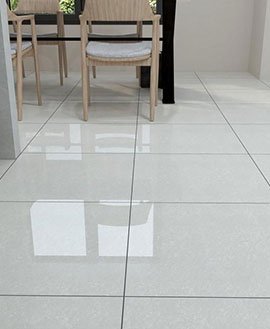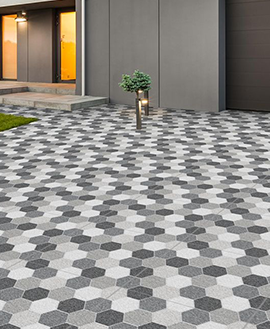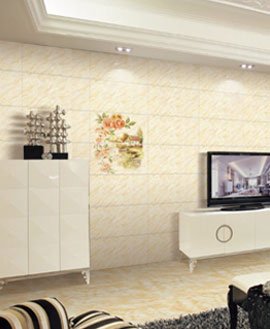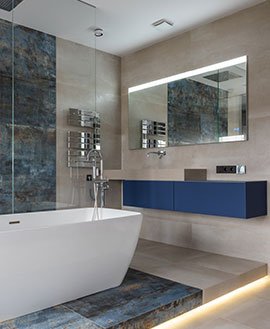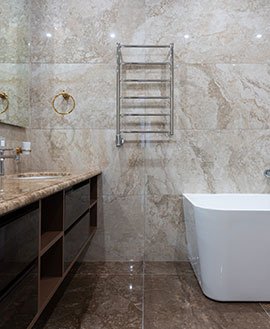Porcelain and ceramic tiles can be glazed or unglazed, and both come with a specific set of advantages and disadvantages; depending on the place of their installation and required functionality. Major differences between the two types are based on factors like thickness, scratch resistance, skid resistance, stain resistance, design pattern and finishing.
For a better understanding of these differences, refer the table below:
| Sr. No. | Criteria | Glazed Tile | Unglazed Tile |
| 1 | Finishing Touch | A supplementary layer of liquid glass is added to tiles by additional firing in the kiln | No additional firing procedure is required |
| 2 | Thickness | Thickness or density is comparatively less (Glazes that are light are harder than the dark ones) | Thicker and denser |
| 3 | Skid Resistance | Less resistance to slip due to top layer glass coating | Highly slip resistance in wet or heavy traffic areas |
| 4 | Scratch Resistance | Scratches are more prominent on the glossy surface | Scratch resistance |
| 5 | Stain Resistance | The non-porous glass coat on the top makes it less prone to staining | More susceptible to staining |
| 6 | Color/Design | More color and design options are available | Basic earthly shades with natural-looking tones |
Manufacturing Glazed and Unglazed Porcelain Tiles:
In terms of manufacturing, there is no stark difference between the two types of ceramic and porcelain tiles. However, the glazed tile is subjected to a supplementary phase of firing in the kiln. During this process, a liquid glass layer is added on top of the tile under high-temperature conditions.

The functionality of Unglazed Tiles:
In comparison to glazed tiles, unglazed tiles are thicker as well as denser. Unglazed tile has a slightly dull or rough texture, which makes it skid resistant. Hence, from a safety standpoint, it is considered apt for areas like kitchens and laundry rooms, where floors are more likely to get wet. Unglazed tiles are also considered good for areas that observe huge traffic, and outdoor installations in regions with a mild climate.
In addition to safety factor, unglazed tile is scratch resistant and known for its natural looks. These tiles get their color from the mineral deposits of the clay of its origin and therefore, showcase tones that look earthly and natural.
The only drawback with unglazed tile is its susceptibility to get easily stained. Hence, it is suggested to apply a wax or sealant on unglazed tiles installed indoors.
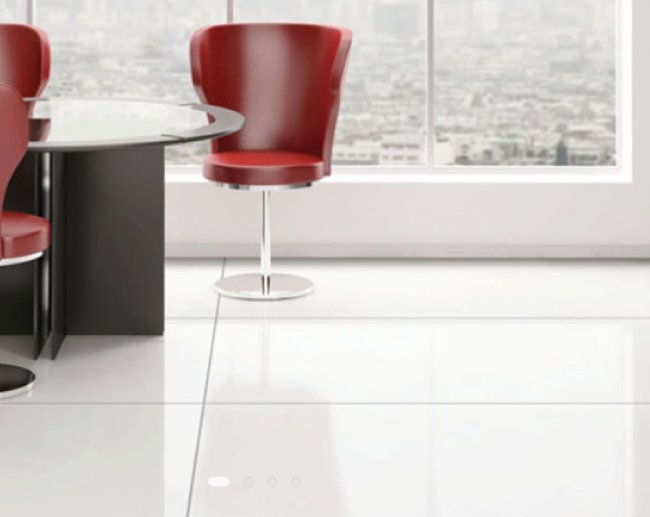
Functionality of Glazed Tiles:
Glazed tiles are relatively less thick and dense, but are more resistant to stains (due to the extra glass coat on its surface). In addition, they are available in a large variety of designs and colors.
Various options are available in glazed tiles that differ in terms of durability. A few variants of glazed tiles are treated at higher temperatures that make them harder. The darkness and lightness of the glaze also determines the hardness of the glazed tile. Tiles with light glazes are harder than those with darker glazes.
The hardness level can also be identified by the intensity of gloss, i.e., glazed tiles with shiny finishes are less hard than those with matt and satin finishes. So, it is always recommended to maintain the right balance between aesthetics and functionality while choosing glazed tiles.
To conclude, we can say that one should consider all the relevant factors, including functional requirement, place of installation and the effect one wants to create, while selecting glazed or unglazed tiles for a particular indoor or outdoor installation.


